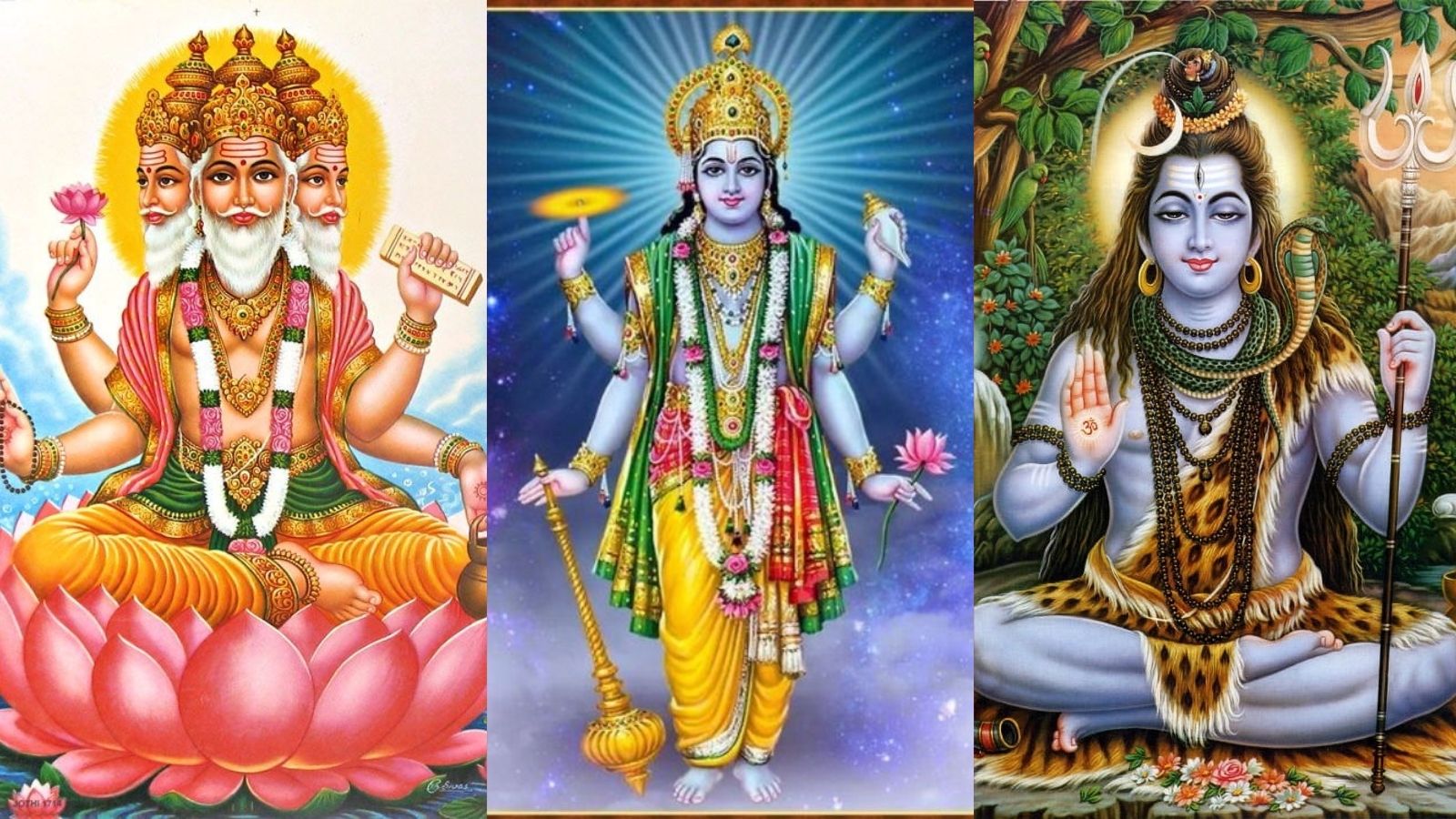In Hinduism, the Trimurti represents the three fundamental cosmic functions personified by three deities:
- Brahma, the creator
- Vishnu, the preserver
- Shiva, the destroyer
Lord Shiva, as the Destroyer in this divine triad, is not merely a force of destruction but a transformative power that paves the way for regeneration and renewal. His role in the Trimurti is essential for maintaining cosmic balance and ensuring the cycle of creation, preservation, and dissolution continues in harmony.
The Concept of the Trimurti in Hindu Philosophy
The Trimurti concept is deeply rooted in the Vedantic and Puranic traditions, where the universe operates in an eternal cycle (Samsara) of birth, sustenance, and dissolution.
- Brahma initiates creation by giving form to the universe.
- Vishnu maintains and protects the universe.
- Shiva dissolves and transforms the universe to allow for new creation.
Shiva’s destruction is not nihilistic; instead, it signifies the removal of illusion (Maya), ego (Ahamkara), and ignorance (Avidya), leading to higher spiritual consciousness.
Shiva as the Destroyer and Transformer
1. The Cosmic Dissolution (Pralaya)
One of Shiva’s primary roles in the Trimurti is overseeing Pralaya, the dissolution of the cosmos at the end of each Yuga (cosmic age). According to Hindu cosmology:
- At the end of a Kalpa (4.32 billion years), Shiva performs the Tandava dance, signaling the universe’s reabsorption into the formless state.
- Destruction leads to renewal, allowing Brahma to begin a new cycle of creation.
2. Destroyer of Ego and Illusion
- Shiva is known as Mahadeva, the great god who destroys human ignorance, attachment, and desire.
- His Third Eye, when opened, burns away illusion and reveals higher truth.
- This destruction is internal as well as external, signifying personal transformation and enlightenment.
3. Shiva’s Role in the Preservation of Dharma
- While Vishnu is typically associated with preserving the world, Shiva plays a crucial role in re-establishing cosmic balance by destroying adharma (unrighteousness).
- Examples from mythology include Shiva slaying demons like Tripurasura, Andhaka, and Jalandhara, ensuring the triumph of divine order.
The Relationship Between the Trimurti
Shiva and Brahma: The Creator and Destroyer
- Brahma creates, but his creation is incomplete without Shiva’s destruction, which makes space for new beginnings.
- In the Shiva Purana, Brahma and Vishnu once argued about supremacy. Shiva manifested as an infinite pillar of fire (Lingodbhava) to demonstrate that he is beyond creation and preservation.
- Shiva is often seen as transcending creation itself, symbolizing timeless consciousness.
Shiva and Vishnu: The Preserver and Destroyer
- Vishnu and Shiva complement each other, ensuring the cyclic nature of the universe.
- In the Harihara form, Shiva and Vishnu appear as a unified deity, embodying preservation and destruction as interdependent forces.
- Legends like Shiva consuming the Halahala poison during the Samudra Manthan show that destruction (Shiva) often serves to protect and preserve (Vishnu).
Shiva Beyond the Trimurti: The Supreme Being
Though part of the Trimurti, Shaivism considers Shiva as Parabrahman, the ultimate reality beyond form and function. In this view:
- Shiva is Swayambhu (self-created), existing before and beyond the universe.
- He is Pashupati (lord of all beings) and Mahakaal (lord of time), governing both life and death.
- In Advaita Vedanta, Shiva is equated with Brahman, the supreme consciousness that underlies all existence.
Conclusion
Lord Shiva’s role in the Trimurti is not just about destruction—it is about transformation, renewal, and spiritual awakening. His function is essential for the cosmic cycle, ensuring the universe continues to evolve. As both the destroyer of illusion and the liberator of souls, Shiva’s influence in Hindu philosophy goes beyond the Trimurti, embodying the ultimate truth of existence.

